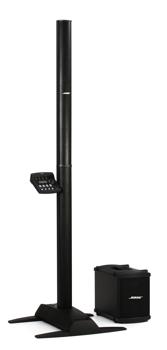There are clear advantages to fullrange speakers, the most obvious being the lack of a crossover and having two, or more, sound sources with all the comb filter issues and tonality issues to contend with. However, as SH so rightly pointed out, the size of the driver is directly related to the quality of the treble AND the bass. A small speaker with good treble will inherently lack bass performance. A large speaker with great bass will inherently lack treble performance. That fact absolutely cannot be avoided.
A phase plug does absolutely nothing for treble dispersion at all - nada, zip, zilch, cero, bupkus. However, a whizzer cone does help with treble performance because you are essentially making a dual cone driver with one large cone and one tiny cone (the whizzer). The tiny cone helps, but that sort of cone and its motion is fraught with other issues like sound wave reflections off the edge, breakup, and directionality at very high frequencies. In general, a whizzer cone gives the impression of good treble by generating noise at high frequencies which is in sync with the actual content - much like a ultra-harmonic generator (BBE Sonic Maximizer).
Personally, I would never build a fullrange with a driver larger than 5 inches, or so. Instead of a large speaker to get good bass, why not a small speaker to get good midrange and treble mated to a subwoofer for the bass where the mating process can be easy and appealing to listen to? That's what I would do.
I really like the Fostex fullrange speakers. Check one of those out, especially the Sigma series.
You still have beaming, though, which is easy to calculate. Take the effective cone diameter of the driver and determine what frequency has that same wavelength. At all frequencies starting at that frequency and higher, the sound will beam like a laser straight forward. That's physics. Then, for all frequencies below that frequency down to where the wavelength is 4x the diameter, the sound will slowly work to not beaming. Simple math. So, if the effective radiating cone diameter is 12", all sound above 1,128Hz will beam directly forward like a laser (unless there is some serious cone breakup, which is essentially THD). The beam pattern will slowly grow wider and wider at lower frequencies until reaching 282Hz where it is 100% omnidirectional (or hemispherical from the cone and the baffle size determines the full spherical pattern frequency).
I like fullrange speakers, but the best sounding don't play loud enough and those that play loud enough tend to sound poor.
A phase plug does absolutely nothing for treble dispersion at all - nada, zip, zilch, cero, bupkus. However, a whizzer cone does help with treble performance because you are essentially making a dual cone driver with one large cone and one tiny cone (the whizzer). The tiny cone helps, but that sort of cone and its motion is fraught with other issues like sound wave reflections off the edge, breakup, and directionality at very high frequencies. In general, a whizzer cone gives the impression of good treble by generating noise at high frequencies which is in sync with the actual content - much like a ultra-harmonic generator (BBE Sonic Maximizer).
Personally, I would never build a fullrange with a driver larger than 5 inches, or so. Instead of a large speaker to get good bass, why not a small speaker to get good midrange and treble mated to a subwoofer for the bass where the mating process can be easy and appealing to listen to? That's what I would do.
I really like the Fostex fullrange speakers. Check one of those out, especially the Sigma series.
You still have beaming, though, which is easy to calculate. Take the effective cone diameter of the driver and determine what frequency has that same wavelength. At all frequencies starting at that frequency and higher, the sound will beam like a laser straight forward. That's physics. Then, for all frequencies below that frequency down to where the wavelength is 4x the diameter, the sound will slowly work to not beaming. Simple math. So, if the effective radiating cone diameter is 12", all sound above 1,128Hz will beam directly forward like a laser (unless there is some serious cone breakup, which is essentially THD). The beam pattern will slowly grow wider and wider at lower frequencies until reaching 282Hz where it is 100% omnidirectional (or hemispherical from the cone and the baffle size determines the full spherical pattern frequency).
I like fullrange speakers, but the best sounding don't play loud enough and those that play loud enough tend to sound poor.

